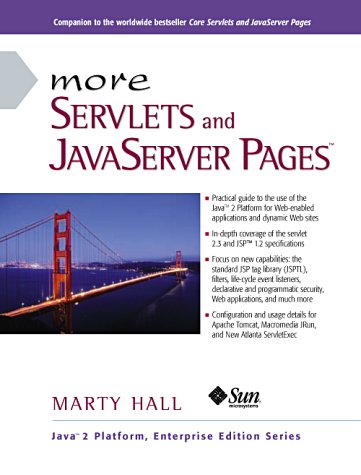
- Category: Java Programming
- Author: Marty Hall
- Pages: 752 pages
- File type: Online, PDF
Read and download free eBook intituled More Servlets and JavaServer Pages in format Online, PDF – 752 pages created by Marty Hall.
This book is a practical guide to the use of the Java Platform for Web-enabled applications and dynamic Web sites. Focuses on new capabilities: the standard JSP tag library, filters, life-cycle event listeners, declarative and programmatic security, Web applications, and much more.
While many books on Java try to cover just about everything, this title’s focus on what’s hot in server-side Java makes it a standout. The book begins with a very solid tutorial to servlets and JSPs, including important HTTP fundamentals (like request headers and processing forms). The author does a good job at summarizing APIs and common options, which helps make this book useful as a working reference, too. The level of discussion here is suited to those with a little Java experience, but even beginners could do a lot worse than this title as an introduction to Web programming.
A great feature of this text is that the author walks you through the actual details of deploying your Web applications (notoriously tricky, even for experts). Screenshots on installing and using tools (like the free Apache and Tomcat software packages), plus detailed advice on deployment, will make sure your code actually runs. (A standout here is the summary of all configuration options available in today’s containers.)
Read and Download Links:
